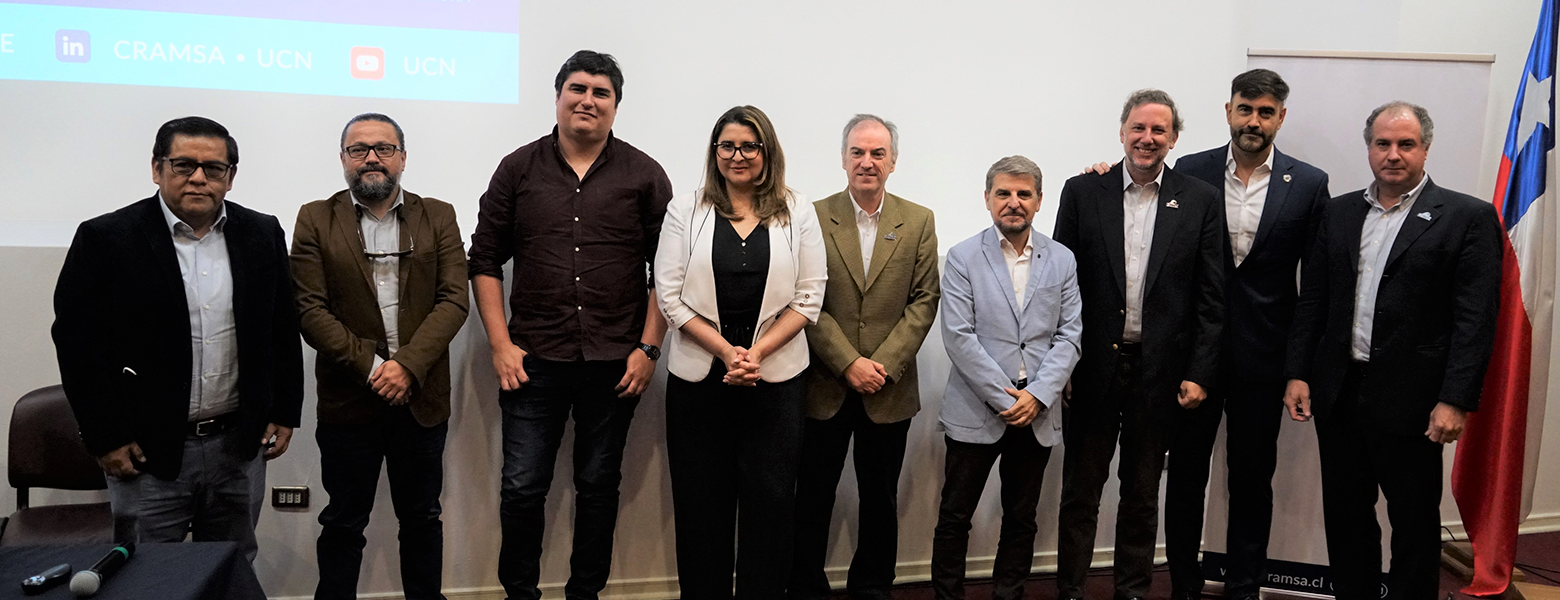Experts Analyze Desalination as a Viable Alternative to the Water Crisis

In an open meeting organized by CRAMSA and the Universidad Católica del Norte, renowned international and national experts reviewed the scope and challenges of seawater desalination, highlighting the natural advantages of our country for its sustainable development.
-
In an open meeting organized by CRAMSA and the Universidad Católica del Norte, renowned international and national experts reviewed the scope and challenges of seawater desalination, highlighting the natural advantages of our country for its sustainable development.
The severe current water crisis invites us to analyze new water sources to ensure the supply for human consumption and productive activities. That was the purpose of the seminar “Desalination and Sustainable Management,” organized by CRAMSA and the Universidad Católica del Norte, an event open to the entire community that valued the inclusion of academia in the analysis, with the participation of recognized national and international experts.
“Environmental education is fundamental. It is important for the population to understand that desalination is something positive, generating wealth, employment, and water supply, with reduced and controlled environmental impacts. The use of this resource from seawater is widely extended in international experience, with over 20,000 desalination plants worldwide producing 100 million cubic meters per day, and countries with significant desalination programs such as Spain, Australia, and Saudi Arabia, among others,” stated Dr. Domingo Zarzo, President of the Spanish Desalination and Water Reuse Association and Director of Innovation at Sacyr Agua, who presented the advances in desalination in other countries and the ongoing innovations.
The expert emphasized that desalination “is a viable and safe option in countries with droughts like Chile, especially in the Antofagasta Region, which has made progress in this field but still has a significant need for water.”
Likewise, national scientists presented different perspectives on the current situation of desalination in our country, highlighting the natural advantages of Chile’s coastlines for its sustainable development and debunking its impacts.
Dr. Javier Quispe, Head of the Environmental Civil Engineering program at the Universidad Católica del Norte, shared the conclusions of his simulation project, which aimed to assess the impact of the desalination process on the sea. “We have identified the salt concentration at a distance of 40 meters from the discharge point. At that distance, salinity reaches a concentration of 35 grams per liter, which is not significantly different from seawater. Therefore, from a technical standpoint, there is no significant impact, and further studies are needed to understand the behavior of marine species.”
Along the same lines, Dr. Rodrigo Orrego, researcher at the Aquatic Toxicology Laboratory and the Alexander von Humboldt Institute of the University of Antofagasta, presented the talk “Experiences in the assessment and monitoring of impacts associated with seawater desalination in the Second Region.” He stated, “In Chile, there are 24 operational desalination plants and 22 under construction. In northern Chile, some discharge into open sea and enclosed areas. For example, we studied a discharge in a protected area at a depth of 15 meters, where we identified the predominance of species highly tolerant to salinity, indicating the presence of life at the discharge point.”
Advantages for industrial development
Dr. Claudio Sáez, Director of the Environmental Research Hub at the Universidad de Playa Ancha, referred to the international experience applied to industry development in Chile, affirming that “any industrial activity can have an impact on the environment. There is an effect, but our studies have allowed us to obtain an accurate diagnosis of how the activity develops in Chile, and in the international context, they demonstrate that the natural advantages of the country, such as oceanographic conditions and depth of its coasts, facilitate rapid dilution of the discharge, resulting in significant lower impacts. By applying appropriate mitigation measures, we can keep them at non-significant levels.”
The meeting also featured a special participation by Alejandro Sturniolo, Vice President of the International Desalination Association (IDA), who highlighted the event as a contribution to information and debate on the subject. “We know that we have first-rate knowledge in Latin America, but still, we see unfounded comments and news claiming that desalination is not sustainable. This seminar serves to advance the exploration of new water sources such as desalination and its advantages for human development.”
The meeting concluded with a panel discussion moderated by Carolina Gallo, journalist and editor of Antofagasta TV, where the speakers addressed the questions raised by the attendees.
You can review the seminar’s live stream at the following link
Speakers presentations
01-Presentacion-Domingo-Zarzo.zip
02-Presentacion-Javier-Quispe.zip
03-Presentacion-Rodrigo-Orrego.zip
04-Presentacion-Claudio-Saez.zip
 Compañía Regional Aguas Marítimas S.A.
Compañía Regional Aguas Marítimas S.A.



 Leave us your message
Leave us your message